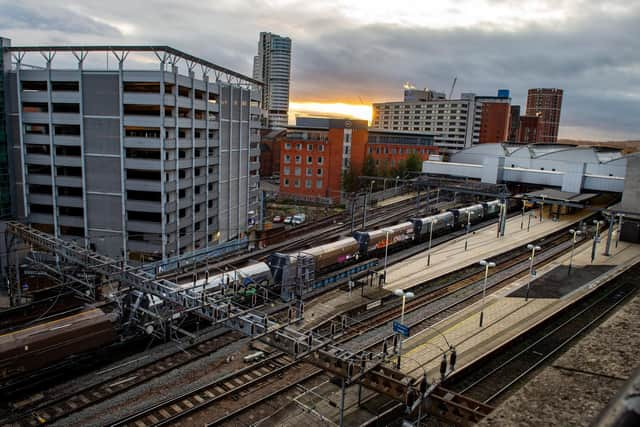We need to stick with one plan for the North’s railways - Justin Moss
Although presented in a rather piecemeal way, the Integrated Rail Plan (IRP) did contain a significant package of investment and several critical upgrades to the region’s railways.
It confirmed that HS2 will go from Crewe to Manchester, proposed a new high-speed line between Warrington, Manchester and Yorkshire and plans to electrify the Transpennine Route.
Advertisement
Hide AdAdvertisement
Hide AdThere is no doubt that all these projects will benefit passengers and freight users in the coming years.


Of course, the reaction to the plan has been mixed, and it is understandable that towns and cities across the North will feel aggrieved that HS2’s eastern leg and Northern Powerhouse Rail have been scaled back.
For the rail industry, the IRP represents yet another change to investment plans.
Our sector has constantly seen investment plans proposed, committed to and then amended or reversed.
Advertisement
Hide AdAdvertisement
Hide AdHS2 was proposed nearly a decade ago, and since that time, we’ve seen various reviews, some of which, like the Oakervee Review, have come out on the side of previous high-speed rail plans.
The latest, the IRP, has once again made significant changes.
RIA North, the trade body for rail suppliers in the north of England, has long urged for the Government to provide certainty and consistency in its rail priorities.
The businesses which deliver these schemes are clear that you will get a more efficient railway delivered at better value for the taxpayer if the private sector has clear sight of and confidence in future plans.
Advertisement
Hide AdAdvertisement
Hide AdFor SMEs, a lack of certainty can impact their ability to survive in such turbulent economic times. What’s more, delays, changes and uncertainty add both time and costs to projects, meaning worse value for the taxpayer.
Since 2018, as an industry, and as a representative group for the North’s supply chain, we have worked closely with the team at Transport for the North (TfN) to support the delivery of its Northern Powerhouse Rail plans.
TfN spent millions of pounds to design and plan Northern Powerhouse Rail, with shovels ready to go.
And on HS2, many businesses were looking at how they could support the eastern leg, building on the capability already being developed by the London-to-Birmingham leg.
Advertisement
Hide AdAdvertisement
Hide AdNow, with revised and scaled back proposals for both these projects, rail businesses face a very different outlook.
Critically, the IRP must not be the end of the story.
With the Department for Transport taking on greater responsibility, there is now a role for the Government to set out the timeframe for how these projects will be delivered.
In the IRP, it says the proposed projects will move to the “Rail Network Enhancements Pipeline” – a £10bn plan of rail upgrades due to be carried out in the next five years.
Despite significant pressure from the industry, the Government has not published an update to this pipeline in more than two years, leaving rail businesses in the dark on what work is planned.
Advertisement
Hide AdAdvertisement
Hide AdThe IRP’s publication only adds to the impetus to get this list of schemes published.
Whatever your views of the IRP, we now need to stick with one plan for the North’s railways.
The railway industry, based right across the country, has some world-leading expertise and is ready to build transformational upgrades it proposes for passengers in the North.
We need to see the Government get on with delivering it and not look back.
Justin Moss is chair of RIA North, the Railway Industry Association’s Northern group representing over 140 rail businesses.
